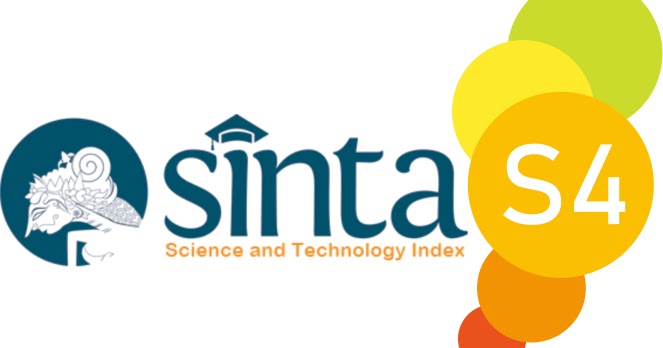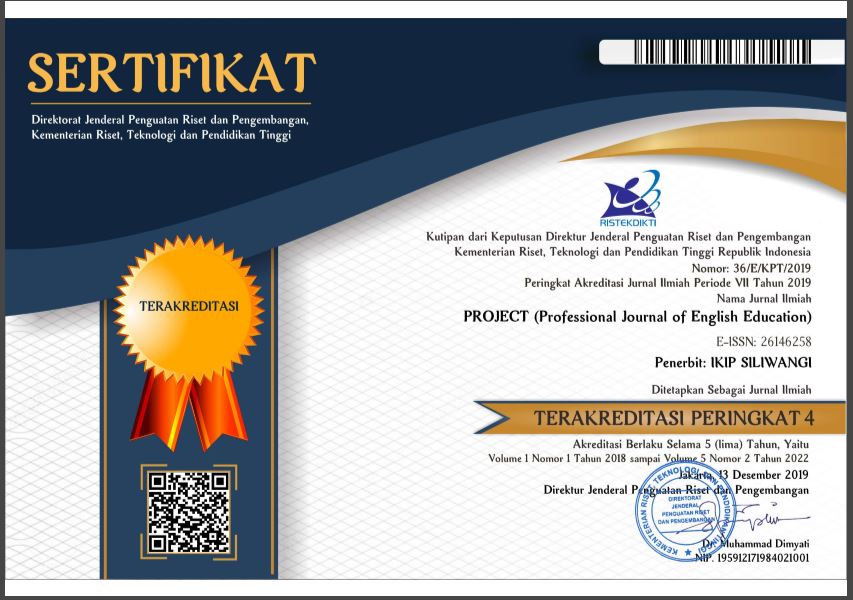Exploring Figurative Language in Ariana Grande’s Interview on The Tonight Show with Jimmy Fallon
Abstract
This research adopts a qualitative descriptive approach to explore the types of figurative language employed by Ariana Grande in her interviews with Jimmy Fallon, published in June 2024, following Perrine’s (2018) typology of figurative language. The data collection process followed the observational method and note-taking technique, enabling systematic gathering of instances of figurative language while preserving the authenticity of spoken interactions. The analysis employed the referential identity method and the contextual meaning technique, focusing on how linguistic expressions relate to their external contexts and uncovering the meanings behind figurative language. A total of 38 instances of figurative language were identified across various types, including 4 similes, 7 metaphors, 5 personifications, 4 apostrophes, 4 metonymies, 3 symbols, 4 overstatements, 3 understatements, and 4 ironies. Metaphors emerged as the most frequently appearing type, reflecting the complex emotional states and experiences that Grande expresses, which resonate with her audience. Interestingly, no instances of allegory or paradox were found, suggesting that while the dialogue was rich in imagery and emotional depth, it did not engage in these more complex forms of figurative language. The findings underscore the expressive potential of figurative language in conveying nuanced interpersonal relationships and experiences.
References
Alvina, A. C., & Rudianto, G. (2024). Analysis figurative language in The Macbeth drama script by William Shakespeare. Scientia Journal, 6(1). https://doi.org/10.33884/scientiajournal.v6i1.8508
Creswell, J. W. (2009). Research design: Qualitative, quantitative, and mixed methods approaches (3rd ed.). SAGE Publication, Inc.
Crystal, D. (2008). A Dictionary of Linguistics and Phonetics (6th ed.). Blackwell. https://doi.org/10.1002/9781444302776
Crystal, D. (2018). The Cambridge Encyclopedia of the English Language (3rd ed.). Cambridge University Press.
Denzin, N. K., & Lincoln, Y. S. (2017). The Sage Handbook of Qualitative Research (5th ed.). SAGE Publications, Inc.
Fairclough, Norman. (2003). Analysing Discourse: Textual Analysis for Social Research. Routledge.
Flick, U. (2014). The sage handbook of qualitative data analysis. SAGE Publications Ltd.
Halliday, M. A. K. (1978). Language as Social Semiotic: The Social Interpretation of Language and Meaning. Edward Arlnold.
Leech, G. (1981). Semantics: The Study of Meaning (2nd ed.). Penguin.
Munte, M., & Afriana, A. (2023). Hyperbole expression in “Cinderella” 2021 selected soundtrack songs. IDEAS: Journal of Language Teaching and Learning, Linguistics and Literature, 11(2), 1202–1220. https://doi.org/10.24256/ideas.v11i2.3880
Perrine, L. (2018). Literature: Structure, Sound, and Sense (12th ed.). Cengage Learning.
Pertiwi, P. E., & Handayani, N. D. (2023). Semantic analysis of figurative language found in Nikkie Tutorials Product review. IDEAS: Journal on English Language Teaching and Learning, Linguistics and Literature, 11(2), 1119–1131. https://doi.org/10.24256/ideas.v11i2.3505
Saeed, J. I. (2016). Semantics (4th ed.). Wiley-Blackwell.
Sudaryanto, S. (2015). Metode dan Aneka Teknik Analisis Bahasa: Pengantar Penelitian Wahana Kebudayaan Secara Linguistis. Sanata Dharma University Press.
Downloads
Published
Issue
Section
License

This work is licensed under a Creative Commons Attribution-ShareAlike 4.0 International License.




